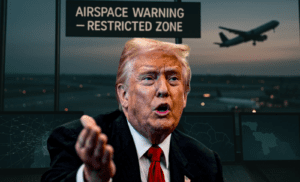President Donald Trump has never shied away from bold economic moves, and his recent statement about imposing new tariffs is no exception. He has acknowledged that the United States will face economic pain—higher costs, potential inflation, and even a recession—but insists it is all for the greater good. According to Trump, these tariffs will encourage companies to return to U.S. soil, reigniting domestic manufacturing. The reality, however, is far more complicated.
For decades, industries such as automotive manufacturing have functioned within an integrated North American supply chain, relying on a seamless flow of parts and production across the United States, Canada, and Mexico. This is not a system that can be dismantled overnight, nor is it one that can be easily replicated within U.S. borders. The idea that America could reestablish its entire manufacturing infrastructure in a matter of months is not only unrealistic—it is mission impossible.
The Auto Industry’s Impossible Challenge
The automotive sector exemplifies the immense difficulties of reshoring production. A single vehicle is composed of thousands of parts, many of which are manufactured in different locations before final assembly. Car frames, electronic systems, engines, and even seat fabrics are produced across multiple countries, taking advantage of specializations that have developed over decades.
A tariff-induced disruption would throw this system into chaos. American automakers rely heavily on just-in-time supply chains, meaning that even minor disruptions can cause major production delays. The idea that factories across the U.S. could suddenly take over production from their counterparts in Mexico or Canada is not only impractical but would also come at a massive cost—one that would be passed directly to consumers.
Higher tariffs mean higher production costs, and those costs will inevitably lead to higher vehicle prices. For a consumer market already grappling with inflation, the effects could be devastating. While the intention behind these tariffs may be to encourage domestic job growth, the reality is that American consumers will bear the brunt of these economic policies.
Lessons from the Past
History provides a clear warning about the risks of protectionist trade policies. The Smoot-Hawley Tariff Act of 1930 was introduced with similar goals—protecting American industries by imposing high tariffs on imported goods. Instead of strengthening the economy, it triggered a wave of retaliatory tariffs from other nations, stifling global trade and deepening the Great Depression.
While today’s economy is vastly different, the same fundamental risks apply. Tariffs that disrupt trade relationships with Canada and Mexico, two of the United States’ largest trading partners, will not occur in a vacuum. Retaliatory measures are likely, creating a ripple effect that harms American businesses, especially those that rely on exports.
The last time Trump imposed tariffs, in 2018, the consequences were immediate. The American steel and aluminum industries saw price hikes, which in turn affected manufacturers that relied on those raw materials. Automakers, appliance manufacturers, and even the construction industry struggled with increased costs. Meanwhile, American farmers were caught in the crossfire of retaliatory tariffs, leading to billions of dollars in lost exports.
These economic disruptions proved that tariffs are not a simple solution for reshoring manufacturing. If anything, they highlighted the unintended consequences of protectionism—higher prices, reduced competitiveness, and strained international trade relationships.
The Reality of Reshoring
The notion that American manufacturers will simply return home because of tariffs ignores the structural challenges of modern industry. Setting up factories, developing supply chains, and training a workforce cannot be achieved overnight. It takes years of investment, planning, and coordination—none of which aligns with the immediate economic upheaval that these tariffs would create.
Beyond that, American manufacturing has evolved in a way that relies on automation and advanced technologies, meaning that even if companies did relocate their production, the number of jobs created would likely fall short of expectations.
A Reckless Bet on Uncertain Gains
Trump’s tariffs may be politically effective, appealing to voters who feel left behind by globalization. However, the economic reality is far more complex. While the goal of reviving American manufacturing is commendable, the strategy of imposing tariffs without a viable transition plan is a reckless gamble. The U.S. economy thrives on trade, and any policy that disrupts well-established supply chains without a clear roadmap for adaptation risks doing more harm than good.
If history is any indication, tariffs will not miraculously bring back manufacturing jobs. What they will do, however, is raise costs for businesses and consumers alike, spark retaliatory measures from key trade partners, and potentially push the economy closer to recession. This is not the path to economic strength—it is a step backward into a world where isolationism costs more than it saves.
America’s economic future depends not on punitive tariffs, but on strategic policies that strengthen innovation, invest in infrastructure, and create an environment where businesses want to manufacture domestically—not because they are forced to, but because it makes economic sense.















